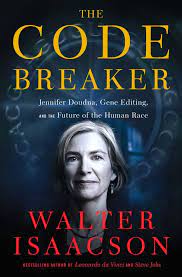


Scientists, including Charpentier, had discovered that the CRISPR-complex has three essential components: the crRNA (CRISPR RNA), which contains some of the virus’s genetic code a molecule called tracrRNA, which prompts the creation of crRNA and a class of enzymes called Cas, or CRISPR-associated enzymes.ĭoudna and Charpentier determined the precise mechanism of the three-component system. If the virus returns, bacteria use these spacer sequences to recognize and destroy the virus. Bacteria remember a portion of an attacking virus’s code and copy it into their own genetic sequence. The two women decided to work on figuring out how CRISPR-a technology microbes use to fight viruses-works. In 2011, Doudna met French microbiologist Emmanuelle Charpentier at a conference. No molecule caught her fancy more than RNA, the neglected sibling of superstar DNA. Doudna believed a molecule’s structure had to be fully visualized before its function could be understood. Doudna’s special interest was figuring out the structure of the molecules of biology.

Soon, the couple had their only son, Andrew.

With a doctorate in chemistry, Doudna and her husband Jamie Cate found home at the University of California, Berkeley. Franklin’s example proved to Doudna that women could be scientists. Doudna liked that The Double Helix played out as a detective story and featured the brilliant chemist Rosalind Franklin, whose work Watson’s team appropriated. The Double Helix is Watson’s account of his Nobel Prize-winning discovery of the double-helix structure of DNA. Reading The Double Helix by James Watson as a 12-year-old propelled her in the direction of chemistry and genetics. Growing up in Hawaii, Doudna became an avid student of nature. CRISPR has tremendous potential as a tool that can cure disease, but the ethics of making gene-editing available in the free market should be carefully considered. Though Doudna is the book’s focus, Isaacson also pays tribute to the numerous other scientists who made her work possible. It primarily focuses on Jennifer Doudna, who received the 2020 Nobel Prize in Chemistry along with French microbiologist Emmanuelle Charpentier for their work on the gene-editing tool CRISPR. The Code Breaker is an account of the science of genetic editing, beginning with the discovery of the concepts of evolution and heredity. This guide follows the 2021 edition from Simon and Schuster, UK.


 0 kommentar(er)
0 kommentar(er)
